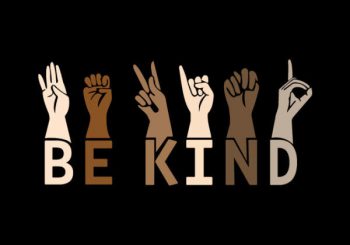Guest Writer for Wake Up World
Deafness is a disability that has historically limited many people’s access to society, education and other parts of living a full life. However, with the exception of being able to hear, deaf people can do everything hearing people can do. All they need to flourish is the right kind of support.
[pro_ad_display_adzone id=”110028″]
Today, many deaf and hearing-impaired individuals still suffer from limited resources and a cultural stigma toward hearing aids and the accessibility of sign language. Here are seven ways you can be an ally to the deaf community.
1. Stay Curious
Before you can become an ally, it’s essential to learn just who you’re allying yourself with. Every deaf or hearing-impaired person is unique, with a different life story and individual personality and interests. Deafness exists over a range, with some deaf individuals being able to hear more or less sound than others.
Some deaf individuals communicate purely through ASL, while others practice lip reading and learn to speak. Differences in communication depend on ability, training and preference. The best way to learn more about deafness is to talk to deaf people who are actually experiencing it. Ask questions, keep an open mind and see what you can learn.
2. Learn ASL
Most deaf individuals are bilingual and speak both verbal and sign language. If you’re interested in allying yourself with the deaf community, learning basic sign language is a good place to start. It will improve your communication and help you immerse yourself more fully in deaf culture.
ASL is a very visual language and relies heavily on facial expressions and context. Depending on where you live, the signs used for communication will be different. Official forms of sign language include American Sign Language, British Sign Language, Chinese Sign Language and Arabic Sign Language, to name just a few.
3. Be Authentic
Many people are nervous to approach deaf people and introduce themselves. They’re afraid of doing something wrong or saying something offensive. However, the deaf community is very welcoming and loves talking with hearing people.
If you’re worried about engaging with deaf individuals, just remember that the most important thing is to be yourself. Ask honest questions, share your real emotions and practice intentional listening. Treat deaf individuals like you would anyone else – with respect, kindness and authenticity.
4. Raise Awareness
Once you’ve learned more about deafness and the deaf community, find ways to tell others what you know. Some people use social media platforms like Instagram and Tiktok to share about deaf culture. Raising awareness is important because it can help hearing and deaf people become more comfortable with each other.
Sharing with others can start very small. For example, if everyone talked to their family and friends about deafness, there would no longer be a need to spread information. Being open about your experiences with the deaf community can empower other people to become engaged in the community as well.
5. Reduce the Stigma
Unfortunately, there are still huge cultural stigmas surrounding deafness, hearing aids and other aspects of the deaf community. Learning more about deafness and spreading awareness can help to reduce these stigmas so that future deaf generations are accepted and have more opportunities.
Every year, approximately 90% of deaf children are born to two hearing parents. These parents need support so they can learn about the options that are available to help their kids succeed. The last thing deaf children need is to worry about how cochlear implants look. There is a vibrant deaf community they can become a part of, and it will also welcome their parents with open arms.
6. Become an Interpreter
If you want to help bridge the gap between ASL and English speakers, consider becoming a sign language interpreter. Getting certified for this role will equip you with powerful communication skills. As an interpreter, you can make education, church and other events more accessible to the deaf community.
As a hearing ASL interpreter, you’ll also have a unique opportunity to share more about the deaf community with hearing people. As accessibility increases, the stigma of being deaf or hearing-impaired will decrease. You can inspire others to learn sign language so that communication between the hearing and deaf communities can improve.
7. Empower Schoolchildren
While some deaf children go to fully deaf schools, others participate in hearing classrooms – a choice known as mainstreaming. When deaf children attend hearing schools, their teachers may communicate with them through captioning, written instruction or technology such as hearing aids.
Because every deaf child has a different level of hearing, communication will look different in every school. However, deaf students face many challenges in hearing classrooms. If you’d like to do more for deaf children, consider becoming a school tutor or classroom interpreter. You can also enter social work or speech therapy to support deaf children’s linguistic development.
Coming Alongside
Many deaf individuals live full lives, rich with friendships, educational access and job opportunities. Apart from being able to hear, deaf individuals are capable of doing everything that hearing individuals can do. However, the deaf community still faces many cultural barriers and stigmas.
You can be an ally with deaf individuals by learning about their culture and language. Make friends within the deaf community and share your knowledge with others. If you want to do more, consider completing special training so that you can support deaf children through interpreting or tutoring.
About the author:
 Kara Reynolds is the Editor-in-Chief and founder of Momish Magazine. Mom, stepmom, and wife – Kara wants to normalize big blended families. She enjoys pilates, peanut butter, and pinot grigio – but not at the same time.
Kara Reynolds is the Editor-in-Chief and founder of Momish Magazine. Mom, stepmom, and wife – Kara wants to normalize big blended families. She enjoys pilates, peanut butter, and pinot grigio – but not at the same time.
[pro_ad_display_adzone id=”110027″]







